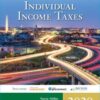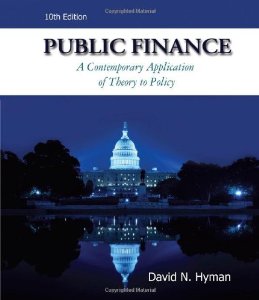Test Bank for Public Finance: A Contemporary Application of Theory to Policy, 10 Edition : David N Hyman
$35.00
Test Bank for Public Finance: A Contemporary Application of Theory to Policy, 10 Edition : David N Hyman
Public Finance: A Contemporary Application of Theory to Policy
Public Finance: A Contemporary Application of Theory to Policy David N Hyman
Public Finance: A Contemporary Application of Theory to Policy David N Hyman 10
Public Finance: A Contemporary Application of Theory to Policy David N Hyman 10 Test Bank
Test Bank for Public Finance: A Contemporary Application of Theory to Policy, 10 Edition : David N Hyman Download
*** YOU ARE BUYING the Test Bank ***
Name: Public Finance: A Contemporary Application of Theory to Policy
Author: David N Hyman
Edition: 10
ISBN-10: 053875446X
ISBN-13: 978-0538754460
Type: Test Bank
– there’s a very high chance that you will see a very similar, if not exact the exact, question in the test!
–
–
If you have any questions, please feel free to contact us. Our response is the fastest. All questions will always be answered in 6 hours., most of the time within 30mins
We also faced similar difficulities when we were students, and we understand how you feel.
But now, with the Public Finance: A Contemporary Application of Theory to Policy 10 Test Bank, you will be able to
* Anticipate the type of the questions that will appear in your exam.
* Reduces the hassle and stress of your student life.
* Improve your studying and also get a better grade!
* Get prepared for examination questions.
* Can save you time and help you understand the material.
This is the quality of service we are providing and we hope to be your helper.
Test Bank is accurate.
Prepare to receive your Public Finance: A Contemporary Application of Theory to Policy 10 Test Bank in the next moment.
ISBN-10: 053875446X
ISBN-13: 978-0538754460
If you have any questions, or would like a receive a sample chapter before your purchase, please contact us at [email protected]
Public Finance: A Contemporary Application of Theory to Policy
Public Finance: A Contemporary Application of Theory to Policy David N Hyman
Public Finance: A Contemporary Application of Theory to Policy David N Hyman 10
Public Finance: A Contemporary Application of Theory to Policy David N Hyman 10 Test Bank
Test Bank for Public Finance: A Contemporary Application of Theory to Policy, 10 Edition : David N Hyman Download
OUTLINE OF THE A PPENDIX TO CHAPTER 1
Indifference Curve Analysis
Assumptions about Preferences
Indifference Curves and Indifference Maps
The Budget Constraint
Consumer Equilibrium
Changes in Income and Prices
Income and Substitution Effects of Price Changes
The Law of Demand
Price Elasticity of Demand
Consumer Surplus
Using Indifference Curves to Explain the Allocation of Time
Analysis of Production and Cost
Isoquant Analysis
Cost
Profit Maximization, Competition, and Supply
Perfect Competition
The Short-Run Supply Curve
Producer Surplus
Long-Run Supply
Price Elasticity of Supply
TRUE /FALSE QUESTIONS
1. On average, persons in the United States devote more of their annual budgets to taxes than they do
to food. (T)
2. A universally observed function of government is the establishment of property rights. (T)
3. The total share of GDP accounted for by government spending in the United States has declined significantly since 1980. (F)
4. In 1929, the federal government spent more than was spent by state and local governments. (F)
5. Since 1930, the percent of GDP devoted to government expenditures has more than tripled. (T)
6. The costs imposed by government regulations on business firms are included in budget data on government expenditures. (F)
7. Government consumption does not require resources to be reallocated from private to government use. (F)
8. Since 1959, the percent of federal government expenditures devoted to transfers has increased by more than 50 percent. (T)
9. Transfer payments, including Social Security and welfare and medical assistance, account for nearly 60 percent of federal government expenditures. (T)
10. Interest on the federal government’s debt accounts for about 20 percent of federal government expenditure. (F)
11. Federal grants-in-aid to state and local governments finance about 20 percent of annual spending by these governments. (T)
12. The federal government allocates about 10 percent of its budget to Social Security. (F)
13. State and local governments in the United States spend a bit more than one-third of their budgets on education. (T)
14. Sales taxes account for about 22 percent of state and local government revenue in the United States. (T)
15. The federal government obtains about half of its revenue annually from retail sales taxes. (F)
16. State governments do not fund any part of Medicaid. (F)
17. The social compact is an 18 th century idea by political theorists. (F)
18. The proportion of revenue received by the federal government from payroll taxes is higher than the proportion of revenue received by state and local governments from payroll taxes. (T)
MULTIPLE CHOICE QUESTIONS
1. The real cost of government goods and services is:
a. money.
b. taxes.
c. the private goods and services foregone.
d. inflation.
2. If the economy is currently operating on a point on the production possibility curve for government
goods and services versus private goods and services,
a. an annual increase in government goods and services can be obtained without any sacrifice of annual private goods and services.
b. it will be impossible to increase annual output of government goods and services.
c. a decrease in the annual output of government goods and services will have no effect on the annual output of private goods and services.
d. a decrease in the annual output of government goods and services will allow an increase in annual output of private goods and services.
3. Government goods and services are usually:
a. not rationed by prices.
b. sold in markets.
c. made available to persons according to their willingness and ability to pay.
d. financed by revenue obtained from sales.
4. Taxes:
a. are prices paid for the right to consume government goods and services.
b. are compulsory payments not directly related to the benefits received from government goods
and services.
c. never affect economic incentives.
d. are used by private firms to raise revenue.












Reviews
There are no reviews yet.